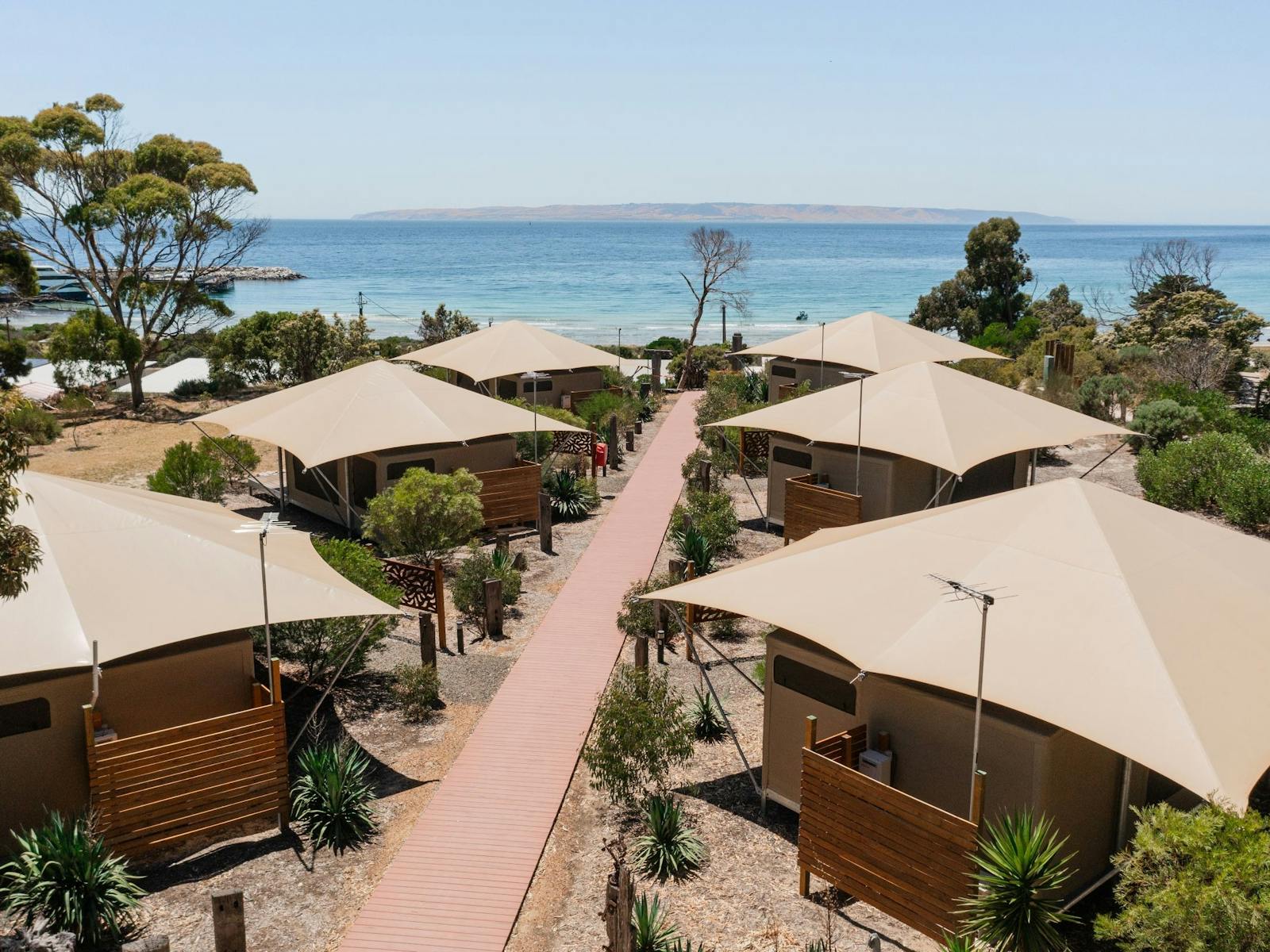The largest native terrestrial predator on Kangaroo Island, Rosenberg’s Goanna was once common across most of South Australia. They are now listed as vulnerable on the mainland and Kangaroo Island is one of their last refuges. Concerningly population surveys indicate that the population here is declining, attributed to altered land use, increased predation by feral cats and feral pigs and increased road traffic.
Rosenberg’s Goanna Facts
The Rosenberg’s Goanna’s powerful body grows to 1.5 metres long, with black-grey skin finely dotted with yellow and/or white spots. Their strong limbs have long, sharp, curved claws and their muscular tails are long and slender. Their large teeth curve backwards, to prevent prey from escaping.
Rosenberg’s Goannas consume spiders, scorpions and other large insects, frogs, snakes, lizards, small birds and mammals. Scavenging on roadkill is a welcome addition to their diet, yet a risky activity. Termite mounds make a perfect nursery for goannas which lay their eggs in the mounds as termites regulate the temperature and humidity, making it an ideal egg hatchery. Courtship and breeding occur during summer, with eggs hatching in spring.
In September, hatchlings of Rosenberg’s Goanna begin to excavate their escape tunnel from termite mounds where eggs were laid. In October and November, the orange and grey hatchlings emerge in warm sunny weather to bask and forage, returning to the safety of the nest at night.
Rosenberg’s Goannas live across Kangaroo Island in coastal heathland, woodlands and forests. They thrive in areas of sandy soil and termite mounds are plentiful, often exploring nearby grazing land to find food and shelter or a breeding partner. They dig burrows for shelter and shelter in these away from predators and during times of low or high temperature.
Where to find them
Rosenberg’s Goannas are active during the day, retiring to burrows in the cooler evenings. Being cold blooded they are often seen basking in the sun to warm themselves or searching for food across Kangaroo Island. They can be found across Kangaroo Island in all types of habitats. Popular spots include along the many trails and walks of Kangaroo Island, such as in Baudin Conservation Park, Beyeria Conservation Park, and at Murray Lagoon. Also often seen in the popular coastal locations of Stokes, Vivonne, Pennington and D’Estrees Bays. Due to their attraction to an easy meal of roadkill and carrion goannas are commonly spotted along roadsides, also posing a risk to them with passing road traffic. If you decide to view a goanna on a roadside, please take special care to carefully select a safe place to park your car well off the road and in good sight of other traffic.
How to watch them
Rosenberg’s Goannas are likely to be an incidental viewing, although reasonably common they can also act with great stealth in the bush. Watch them quietly and from a distance of around 20 metres. They are flighty animals and can be easily spooked, if they change their behaviour while you are watching them you are probably too close. If you can stay very quiet, calm and still you will be rewarded with a wonderful viewing experience. If you decide to view a goanna on a roadside, please take special care to carefully select a safe place to park your car well off the road and in good sight of other traffic.
Did you know?
Whilst the female Rosenberg’s Goanna lays the eggs in a termite mound, often both male and female then guard the termite mound until termites have patched the mound and the eggs are safe. This helps hide and protect the eggs until they hatch in spring.














